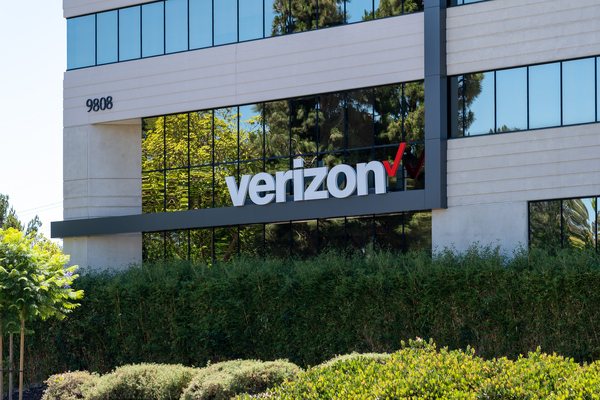How to keep hold of your top procurement talent
Sponsored by Amazon BusinessIn a competitive recruitment market, the key to retaining top procurement staff lies in empowering them with technology that will enable – not hinder – their performance, helping them to make smart business buying decisions and add value to internal customers.

Retaining talented staff is a never-ending challenge for every business, and the procurement function is no exception. Procurement professionals are highly sought-after, and likely to be targeted by headhunters keen to bring their talent and experience to other organizations.
A recent study by Gartner finds that only 14 per cent of leaders expect to have the procurement talent they need to meet future requirements, so organizations can ill-afford to have their best people heading off elsewhere.
Research by Lakeside Software finds that 36 per cent of professionals have considered leaving their jobs because of a poor technology experience, and 14 per cent have actually done so. It also estimates that employees only work at 60 per cent of their potential, due to limitations with tools and infrastructure.
“Traditional ERP systems can be complex and outdated, making everyday tasks cumbersome and time-consuming,” says Shelley Salomon, VP of Amazon Business. “Many of these systems offer poor spend visibility.
“When it’s tough to track where the money is going, businesses may overspend or miss out on savings opportunities. Also, many of these systems don’t support responsible sourcing, making it hard to find and verify sustainable and ethical suppliers. These issues show why we need modern, streamlined procurement solutions.”
While some churn may be inevitable, organizations can take steps to ensure their procurement teams are satisfied, and one of those is by ensuring they have the technology they need to do their jobs effectively. Digital platforms can streamline the procurement process, making it more efficient and user-friendly. This can lead to more positive experiences for both the procurement team and internal customers.
Investing in employee training, including around new systems, is also a proven way to retain people, with research by LinkedIn suggesting 94 per cent of people are more likely to stay with an organization that has invested in their learning and development.
Over time, it’s no surprise that professionals grow frustrated with out-of-date and inefficient technology, particularly if it’s clear that peers are taking advantage of newer, digital platforms. Only being able to offer a frustrating and cumbersome process to internal customers will lead to disgruntled employees, who will likely view procurement as a barrier to their ability to get their jobs done. This will also filter through to customer service or the quality of the end-product, affecting the reputation of the wider business.
Inefficient processes will cause other frustrations for procurement people. A likely consequence is an increase in maverick spending, where people decide to bypass procurement processes entirely and purchase items on a company credit card or through the expenses system.
This means those purchases will not go through preferred suppliers, making it harder to meet pre-agreed volume commitments with those suppliers. This can impact sustainability or wider corporate social responsibility goals, as preferred suppliers will have been selected based on wider company objectives in these areas. This will only become more important in the future: a study by the World Economic Forum finds 60 per cent of organizations are prioritizing sustainable procurement practices.
Then, there needs to be more information about spending, such as how much has been spent and with which suppliers. This is vital for those working in procurement, because without such insights it becomes much harder to make informed decisions about future strategy – the part of the job that really gets procurement professionals excited.
On the other hand, having an efficient platform through which procurement teams and wider employees can access the products they need to do their jobs through approved suppliers can boost both the perceived value and reputation of the procurement function, and those who work within it. It will also make the job easier, with implications for reducing stress and workload. A survey by Harvard Business Review finds 72 per cent of leaders believe digitizing processes and technologies will significantly improve operational efficiency.
“Whether they’re shopping for themselves or for their business, customers expect a vast selection, great prices, and a convenient shopping experience,” says Salomon. “With 74 per cent of leaders seeing digitization as key to better operations, it’s clear we need seamless, consumer-like experiences in business procurement because this is what we are used to. This is essential for keeping employees happy and staying nimble in our operations.”
Modern procurement ecosystems can deliver a more efficient service to employees and help procurement professionals take advantage of new developments. Machine learning, for instance, can help predict future demand and prices, which could prove vital in the current turbulent economic environment.
“AI is making procurement way more personalized,” adds Salomon. “By analyzing past purchases and user preferences, AI is able to recommend products that fit current needs and past trends, and even make predictions about what businesses may need in the future.
“Bringing AI into procurement isn’t just a tech upgrade – it’s a strategic move towards smarter business buying. By leveraging these technologies, we can set higher standards in procurement.”
With the battle for procurement talent heating up, organizations need to do all they can to ensure those working in the function can do their jobs to the best of their ability. That means modern procurement ecosystems that simplify the buying process for internal customers, help channel spend through suppliers that meet specific credentials, and provide the management information on which to help deliver further efficiencies.
“When we provide our teams with user-friendly procurement tools, it helps our businesses run smoothly and stay competitive,” concludes Salomon. “This includes investing in training, technology and support systems to keep procurement teams engaged and satisfied.”
To learn more about how Amazon Business can help you adopt digital procurement processes supported by machine learning, visit business.amazon.co.uk/.

Business Reporter Team
Most Viewed
23-29 Hendon Lane, London, N3 1RT
23-29 Hendon Lane, London, N3 1RT
020 8349 4363
© 2024, Lyonsdown Limited. Business Reporter® is a registered trademark of Lyonsdown Ltd. VAT registration number: 830519543





